
When you’re living in a city whose history dates back to the 1600s, every day is an opportunity to discover another mind-blowing piece of historical trivia. Many of New York City’s secrets have been covered up and forgotten for decades, while the tourist hoi polloi zooms in on the more predictable attractions, such as the Empire State Building or Lady Liberty.
It’s about time you give the the more strange and surprising of the city more thought. Many of these gems are hidden in plain sight: A Soho loft filled with nearly 300,000 pounds of dirt, for example — while others are so exclusive that most New Yorkers will never see them. From an abandoned subway station at City Hall to a colonial African burial ground lost for almost 300 years, we’ve rounded up the city’s most unbelievable, best-kept secrets.
Washington Mews
Greenwich Village is one of the busiest parts of downtown Manhattan, but this picturesque street corner shares none of the bustling traffic. This gated street was once the home of Gertrude Vanderbilt Whitney, founder of the renowned Whitney Museum, and is now leased by NYU for faculty purposes. Despite the block being technically closed to the public, many Instagrammers seem to be able to bypass the gates and snap their #OOTDs.
Smallpox Hospital, Roosevelt Island
This former infirmary has been abandoned since the '50s, but its spooky reputation captivates visitors to this day. It's been said that spooky sounds and dark shadows are a common occurrence on the grounds. The structure is located on the Southern tip of the highly walkable Roosevelt Island, should you want to try your luck.
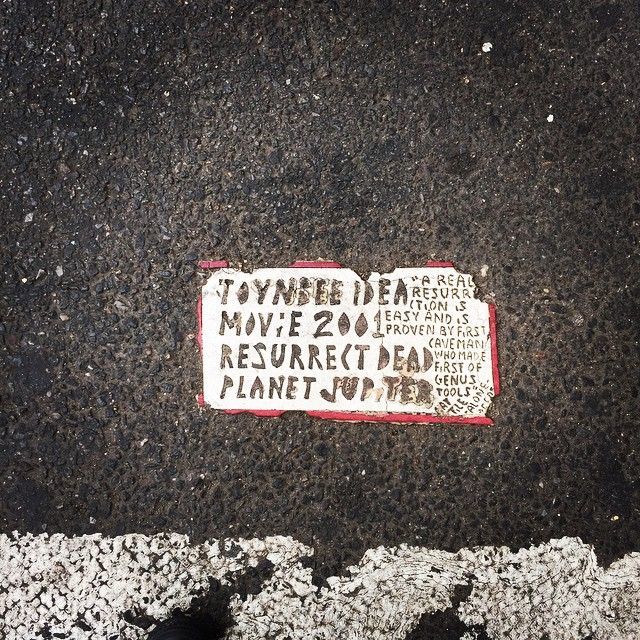
Tonybee Tiles
Unlike many of NYC's secrets, the Tonybee tiles are hidden in plain view. They first started appearing around the Northeast the 1980s (eventually spreading to South America), and have fascinated amateur sleuths determined to figure out exactly who placed them and why. There are some pretty compelling theories, the most convincing one put forth in a 2011 documentary, Resurrect Dead, but we may never know for sure. If you keep your eyes out, you might see one of the dozens of tiles in NYC in various states of decay right under your feet, or just check out the map of all known Tonybee tile locations if you want to make sure not to miss them.
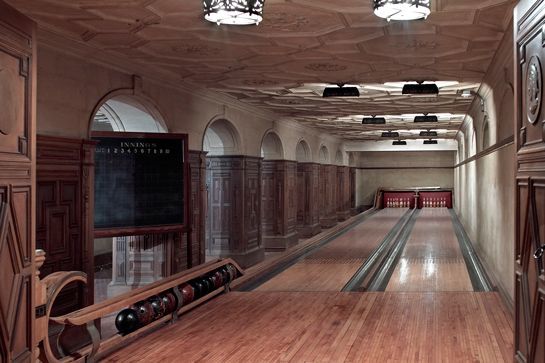
Bowling Alley Beneath The Frick
Gilded Age industrialist Henry Clay Frick is best known for his exquisite collection of Old Master paintings and French decorative arts. Walking through the Fifth Avenue museum in his former mansion, you're more likely to imagine masquerade balls than bowling balls, but hidden in the sub-basement lies Frick's private bowling alley. Obviously not one to cut corners, he installed the finest lanes (and billiard table) money could buy. Sadly, it's now closed to the public, but you can see its beautiful wood paneling inside the Frick Art Reference Library.

The Garment District's Freight Entrance Restaurants
It's easy to pass by these tiny lunch counters when they blend into the street scene of the Garment District. But, if you stop to look, you'll find several little spots serving cheap, simple food in active loading docks. Some have been around for decades, like El Sabroso, which serves $1 empanadas and daily specials. There’s nothing glamorous about these places hidden amongst designer showrooms, but they're fun spots for a cheap, off-the-beaten-path lunch.
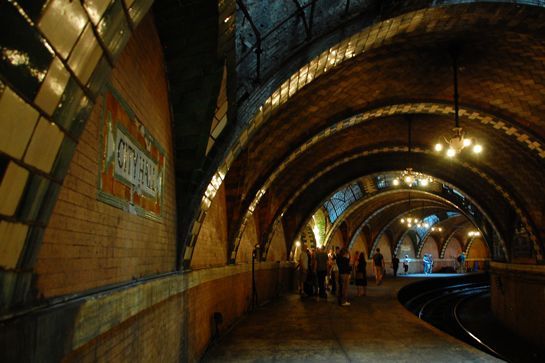
Abandoned City Hall Subway Station
One of the city's oldest and most beautiful subway stations remains abandoned, but intact, in downtown Manhattan. The old City Hall stop was built in 1904 with Guastavino tiled arches (the same kind used in Grand Central), stained glass skylights, and brass lamps. It was decommissioned in 1945 because the elegant curving track couldn't accommodate the city's new, longer trains. You can tour it through the Transit Museum, or stay on the 6 train as it returns to the uptown track from the end of the line to catch a glimpse of the beautiful, old station.
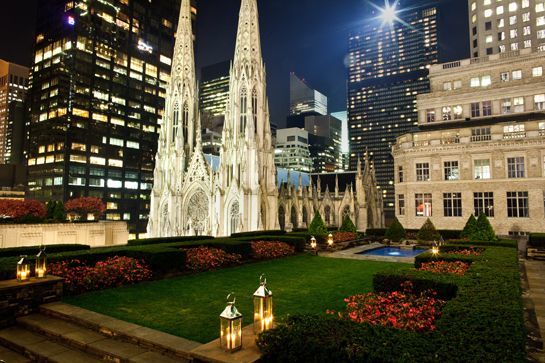
Rockefeller Center's Hidden Rooftop Gardens
Thousands of people visit Rockefeller Center every day, but almost none of them get to see — or even know about — its secret rooftop gardens. High atop midtown's Art Deco masterpiece, the lush little garden — which is exclusively rented out for private events — provides lucky visitors with amazing views of Fifth Avenue and the plaza's ice skating rink below (if you’re willing to shell out the $12,500 rental fee, of course).

Chinatown's Doyers Street Tunnel
Though the Doyers Street tunnel (next to the trendy speakeasy Apothèke) is innocuous today, it used to be an escape route for people fleeing the gangs that populated the area in the 1800s. (In fact, Doyers Street was once called "the bloody angle" of the city because its sharp curve allowed rival gangs to sneak up on each other.) If you thought Gangs of New York overdramatized NYC's history for the sake of box office appeal, think again. Ruthless groups like the Dead Rabbits ran amok, and this is where it all went down.

Central Park's Hallett Nature Sanctuary
You might think you know every corner of Central Park, but New York’s favorite green space has its secrets. In 1934, parks commissioner Robert Moses (the man responsible for the BQE) sealed off this four-acre piece of land, aiming to preserve it as a bird sanctuary. It remained untouched for nearly 70 years — visible but inaccessible. The Central Park Conservancy has been hard at work cleaning up the overgrown patch and weeding out invasive species. They opened the Hallett Nature Sanctuary to the public on a limited basis for the first time in 2013.
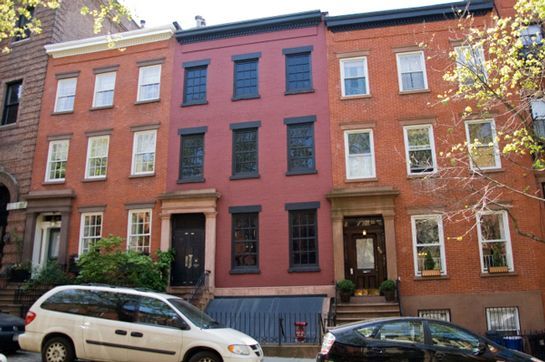
Brooklyn Heights' Secret Subway Ventilator
If you've ever walked past 58 Joralemon Street in residential Brooklyn Heights and thought something was slightly amiss, you're absolutely right. The blacked-out windows conceal the fact that there’s actually no house behind the red façade. In fact, the building hides a subway ventilator and emergency exit that blends into the row of townhouses almost seamlessly.
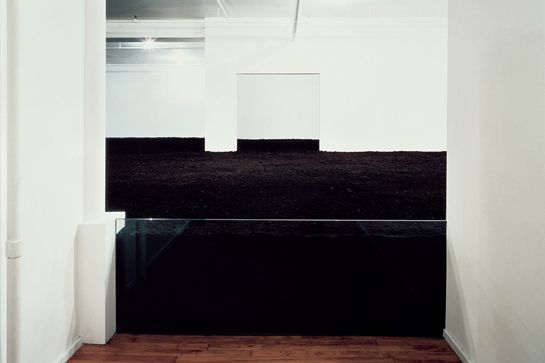
The New York Earth Room
Tucked away among Soho's chic boutiques is a rather unusual art installation. A small sign at 141 Wooster Street marks the site of the Earth Room, run by the Dia Art Foundation. Go upstairs and you'll find an otherwise pristine white loft filled wall-to-wall with 280,000 pounds of dirt. Earthworks artist Walter De Maria created the installation in 1977, and the soil has never been changed. You're likely to find the place all to yourself, which actually makes for a tranquil, meditative moment. Kinda makes you wonder what other art installations you're missing, doesn't it?
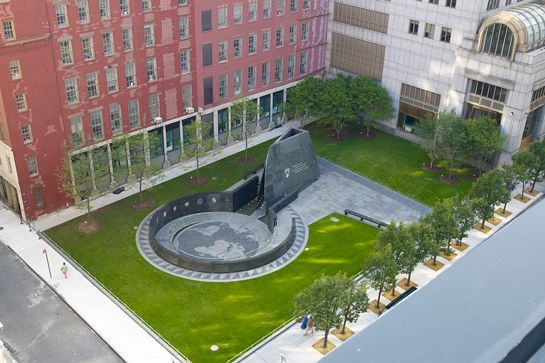
For nearly 300 years, New Yorkers walking by Duane Street and Broadway near City Hall had no idea that they were treading over the largest and earliest African-American cemetery in the United States. Africans were brought over as slaves as early as the 1625, and built the original fortified wall that gave Wall Street its name. By the time the cemetery closed in 1794, an estimated 20,000 people were buried there. Though marked on old maps, the burial ground’s existence was forgotten until 1991, when an excavation rediscovered it. It’s now a National Historic Landmark.

Radio City Music Hall's Secret Apartment
Imagine having your own private apartment inside one of the city's most gorgeous Art Deco buildings. As a token of their appreciation, the architects of Radio City Music Hall built a lavish apartment — complete with leather club chairs, velvet curtains, and murals — for Samuel "Roxy" Rothafel, the impresario who produced the theater's glamorous shows. High above the stage, Roxy entertained Hollywood's elite, including Samuel Goldwyn and Alfred Hitchcock. After his death, the apartment was forgotten and disused, but today it’s kept in pristine condition and rented out for private parties.
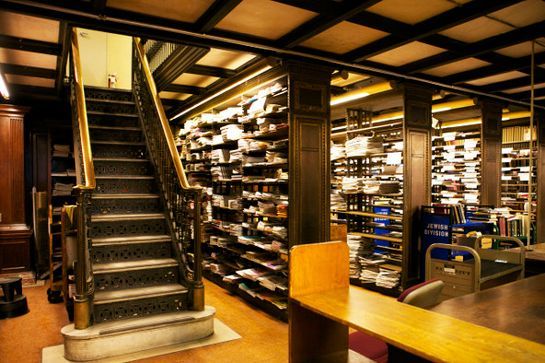
The New York Public Library's Book Vault
When the main branch of the New York Public Library was built between 1902 and 1911, it was not only a major triumph for knowledge, but also a symbol of wealth and beauty; at the time, it was the largest marble buildingever completed in the United States. And, while the library houses too many books to count, it's also home to some very valuable treasures kept under lock and key, including Shakespeare's folios, Walt Whitman's original copies of Leaves of Grass, and Jack Kerouac's manuscripts. Storage for the collections goes 30 feet deep under Bryant Park, so if you picnic on the lawn, you're literally sitting atop some of the world's greatest literary treasures.
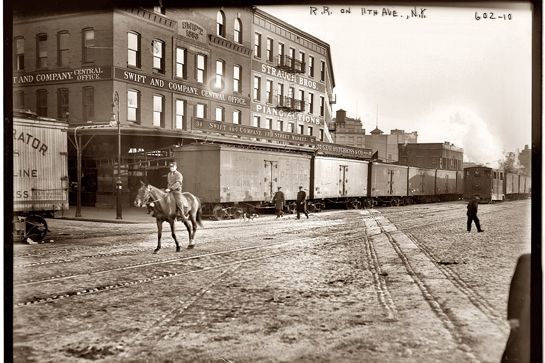
Cow Tunnels Under 12th Avenue
If you think traffic is bad in New York today, just imagine what it was like getting stuck on 12th Avenue thanks to a herd of cows crossing the street. Long before Chelsea and the Meatpacking District were cleaned up, the area became so overrun with cows heading to the slaughterhouses that it was necessary to come up with a solution to keep them out of the way. Though cow tunnels are often believed to be an urban legend, it’s been proven that they existed at 34th Street and between 38th and 39th streets on 12th Avenue.
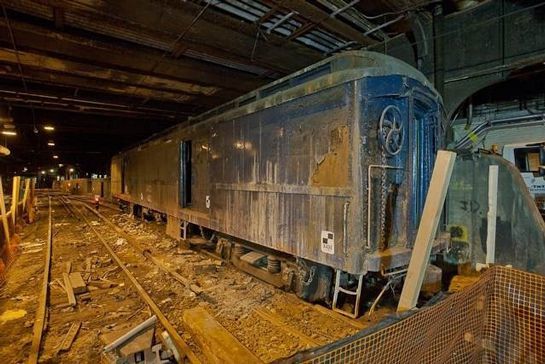
Track 61 Under Grand Central
Grand Central Terminal is chock full of secrets, but the most fascinating one may be the abandoned Track 61, with its private elevator that goes directly into the Waldorf Astoria. VIPs used it as a discreet escape route — most famously, Franklin Delano Roosevelt, who may have taken advantage of this mysterious mode of entry to hide his worsening case of polio. Supposedly, the elevator was built large enough to fit his car, which it brought up to the Waldorf’s garage. Unless you’re POTUS or a VIP, this spot is definitely off-limits.

Speakeasy Under The Woolworth Building
The Financial District’s glorious Woolworth Building — New York City’s tallest skyscraper, when it was built in 1913 — has been regarded as rather mysterious since access to the public was closed off after 9/11. Once dubbed the Cathedral of Commerce, the Gothic skyscraper is known for its opulent lobby, which features Byzantine-style mosaics decorated in gold leaf. Even more fascinating is the ultra-hip speakeasy hidden beneath the building. Heading into The Wooly feels a bit like stepping into a Wes Anderson film, with whimsical paintings of animals and lamps rescued from the Plaza Hotel. For now, sadly, it’s only open for private events.
The CloistersThis museum is one of the best kept secrets in NYC. With a collection over 2,000 pieces of medieval artwork from Europe and a stunning Gothic facade, this is the perfect place to decompress and get away from it all.
Doyers Street
This alleyway is one of the most notorious streets in Chinatown. Also dubbed the "Bloody Angle", this street — with its rather sharp turn — was ground zero for Chinese gang fights back in the 19th century.
By: Laura Itzkowitz